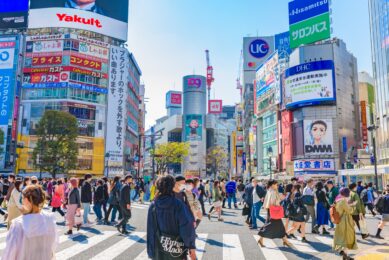The economy is booming and the incentive and recognition industry is following suit. Incentive Research Foundation released its 2017 Trend Study, and we’ve condensed their assessment into this quick-hit list.
Everyone wants non-cash rewards.
Business has changed a lot in the past twenty years—77 percent of U.S. jobs are now service-focused—and companies have had to adapt. With the rise of service jobs has come the rise of incentive programs. The number of U.S. businesses using non-cash rewards has risen from 26 percent in 1996 to 84 percent in 2016. Traditional compensation systems don’t properly account for the millions of other hats employees wear outside the paper job description, so incentive programs have filled that gap. With 70 percent of companies now including an HR representation on their Board of Directors, it’s a trend that is expected to continue and evolve.
Government regulation means there are a few more hoops to jump through.
There’s been a rapid succession of changing government regulations on incentive program design and execution, which makes it tricky to organize them. Almost 60 percent of respondents in the latest IRF Pulse Study said they agree or strongly agree that government regulations are making it more difficult to design reward and recognition programs. Whether it’s the 2016 Conflict of Interest rule instated by the U.S. Department of Labor or newly proposed non-exempt overtime regulations, it can slow down the process of building a rewards program and limit what the program can actually do.
Businesses are using incentive travel to award their top-performing employees.
Nearly 40 percent of U.S. businesses now use incentive travel to reward and recognize their top performing employees, salespeople, and channel partners. Most of the travel remains within the United States, but Mexico and the Caribbean also remain top destinations. As budgets continue to grow—one third of planners now have a budget of $3000-$4000 per person—and more luxury hotels and properties with ample meeting space are coming online, it seems this segment of the industry is going gangbusters.
Gift card programs are booming.
Annually, U.S. businesses now spend almost $23 billion on name-brand and branded merchandise for reward programs and over $24 billion annually on gift cards. The growth for these reward programs is mostly in sales and predominantly in middle market businesses. This is good news for small businesses, as it’s a lot easier and more accessible to install a gift card program than incentive travel.
The threat of disaster looms large.
Zika. Terrorism. Hurricanes. There’s a lot to be wary of in today’s world and planners are well aware of how these disruptors can derail their event. Almost 60 percent of planners have experienced some form of disruption in their events, estimating that almost a quarter of their events have been affected in some way. But not all of those disruptions were newsworthy—it’s mostly weather- or vendor-related. In truth, a lot more time is being dedicated to managing disruptions, both working to ensure they don’t happen and having a plan in place in case they do.
Everyone wants a unique experience.
Tapping emotional engagement through a strategic choice of rewards and incentives is a powerful way for businesses to motivate their stakeholders. According to the most recent IRF Pulse Study, 25 percent of program owners are increasing individual travel in their programs in 2017, with 12 percent saying they are adding budget to do so. Likewise, 42 percent of program owners are increasing the number of “experiential rewards” in their portfolio (e.g. spa days, concert tickets, expensive dinners, sporting events, etc.). Bottom line is that everyone is looking for individualized experiences and companies should keep things as unique and original as possible.
Think of technology as your tool kit.
It should come as no surprise that technology has been a game changer in this industry. Almost 90 percent of large businesses report having technology in place to support their incentives and reward programs. Mobile device integration is now a standard expectation for incentive programs. So look to technology as your box of tools to further engage with the audience through mobile, social, wearable, predictive and view-altering tech.
Let your program evolve organically.
Twenty years ago, there were only four reasons for non-cash reward programs: safety, service, sales and quality. Today, the Incentive Federation measures over 12 different reasons. U.S. businesses now invest over $28 billion annually in points programs. But the ways in which those programs are implemented are unique. Some companies have created reward programs that donate money to charities in an employee’s name. Others have taken a personalized approach. But the most important takeaway is that companies should build programs that are reflective of their own ethos.
Reward industries are consolidating.
During the recession, many incentive programs merged and consolidated, and the practice hasn’t declined since the economy bounced back. If the trend continues or accelerates, there may be reason to fear higher costs or disruption. A seamless transition is the goal.
The reach of globalization has stretched even further.
Once thought of as only affecting the incentive travel side of the market, globalization now influences all types of reward and recognition programs—merchandise and gift cards included. Over three-quarters of incentive travel program owners will run at least one program outside U.S. borders in 2017. Furthermore, three-quarters of the incentives industry includes international participants in their non-cash rewards programs. Incentives and recognition make up a global industry; politics therefore influences the way it operates. Expect to see a little bit of turbulence and uncertainty with major elections coming up in Germany, France and the Netherlands.




